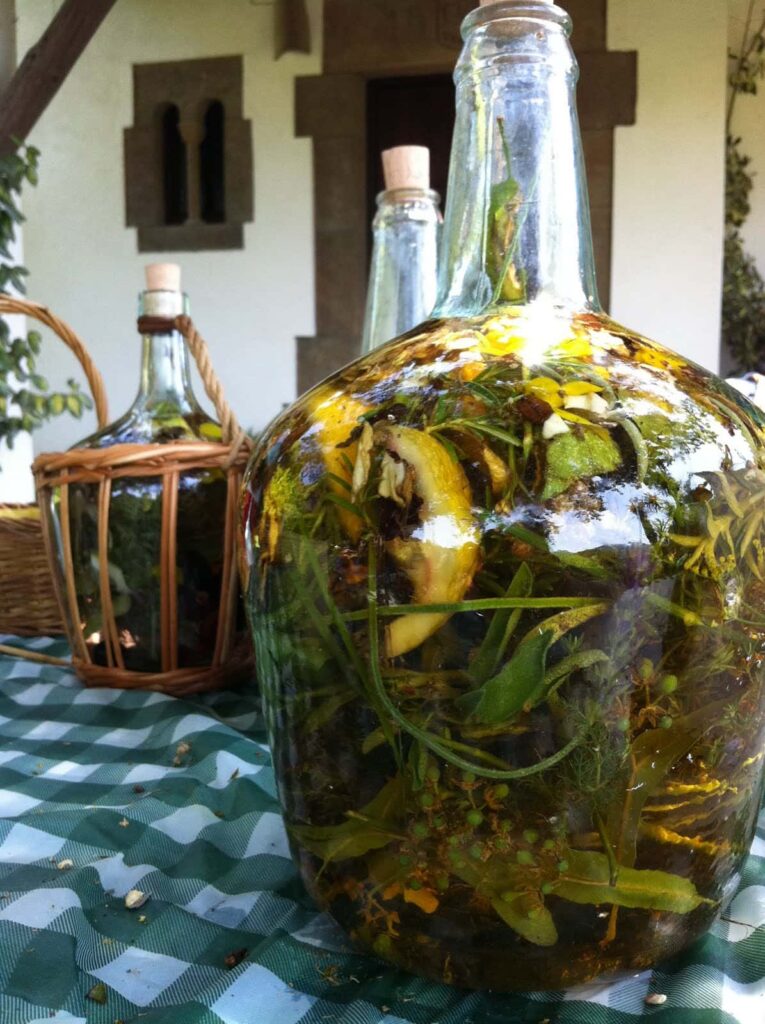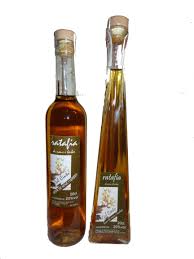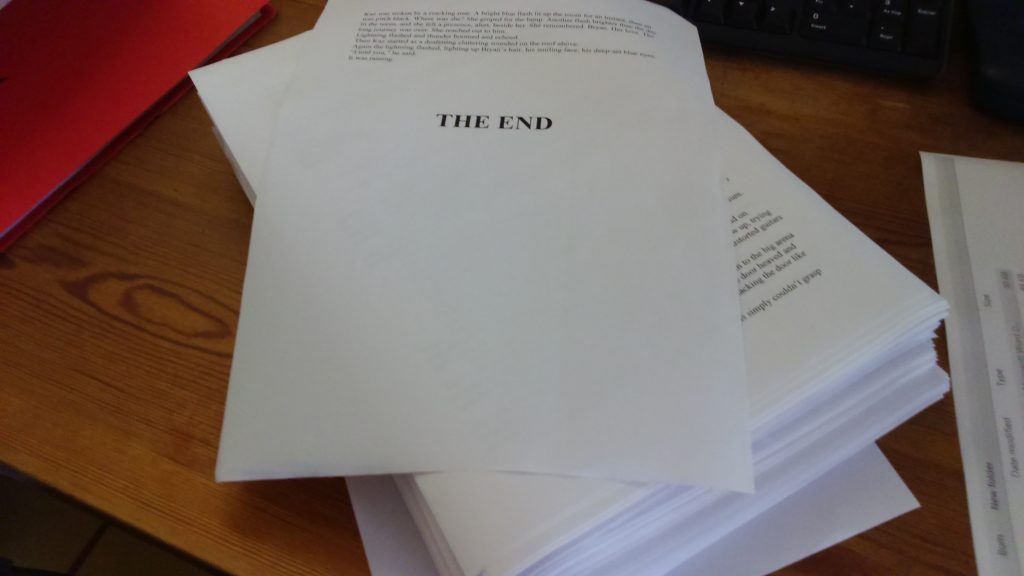
Ratafia
It really was difficult to decide what to post for R. Top of the list was Reus, the city, basically so I could give its pronunciation (having heard it mangled so often): RAYoos. Then there’s rambla… rauxa… the Two Rogers (Roger de Llúria and Roger de Flor)… Anyway, yesterday I was watching our latest celebrity hipster TV chef make pigs trotters – not my favourite dish to be honest – when he said, with his signature wicked grin: “and now a good dash of ratafia (rattaFEEa) — to make it really Catalan.”
Bingo.

Jacint Verdaguer (one of the greatest Catalan poets, whom we’ll meet when we get to the letter V) tells this story:
Once upon a time, three bishops, from Vic, Barcelona and Tarragona, met for a regional council in a farmhouse somewhere in Catalonia to thrash out an important issue. Once they had reached an agreement and signed the relevant papers to this effect, they asked the farmer to bring them a drink. The farmer produced a big bottle of homemade liqueur and poured three glasses. The drink was new to the bishops, and they loved it.
“This is really awesome,” they said. “What is it?”
“It’s a drink we make here,” said the farmer.
“Doesn’t it have a name, man?”
“Not that I know of.”
“Right, then,” said the bishops, “we’ll find our own name for it. One that marks our agreement. How cool would that be?”
The three bishops had a think, then one of them yelled: “Got it! Rata fiat!”
(The expression ‘rata fiat’ is Latin for ‘it is ratified’).
Whatever. Some linguists believe that the word ‘ratafia’ is Creole, imported via French from the French West Indies, where in the 17th century the indigenous people used the name ‘tafia’ for rum made with sugar cane liquor macerated with fruit. This word features in a 1675 text from the island of Guadalupe.
Anyway, in Catalonia ratafia is made from alcohol (aguardiente) mashed with fruits, fresh walnuts, a variety of herbs, lemon peel, as well as cloves, cinnamon and nutmeg. Many other herbs and spices may be used and sugar is often added for a thicker, sweeter, drink. As ratafia was traditionally made at home by farmers and other country people, there is no one master recipe: whatever fruits and herbs were on hand would be thrown in. Interestingly, herbs picked on the Nit de Sant Joan are believed to have magical properties and bring good health and good luck, so ratafia is typically made then. The bewitching concoction is left to macerate for at least 40 days outdoors, where it gets both sun and shade.
‘Ratafia catalana’ has an Indicació Geogràfica in the category of Spirits. It’s usually drunk as an aperitif and also goes well with ice cream, cakes and biscuits and other desserts. I don’t drink alcohol, but I’m told that ratafia is “full of different tastes hidden within the depths of the liquid and allows the drinker to experience a little piece of the Catalan forests.”
The Catalans take their food and drink extremely seriously, and ratafia has its own dedicated fairs and festivals packed with tastings, competitions, workshops, herb collecting walks, you name it. All is revealed at the website of the – wait for it – Ratafia Brotherhood – la Confraria de la Ratafia.
And if you really fancy making Catalan pigs trotters, you’re welcome to go here.



2 Responses
It sounds delicious! Where can I get some?
Good question! We can have a look in the bodegas, vinotecas etc.